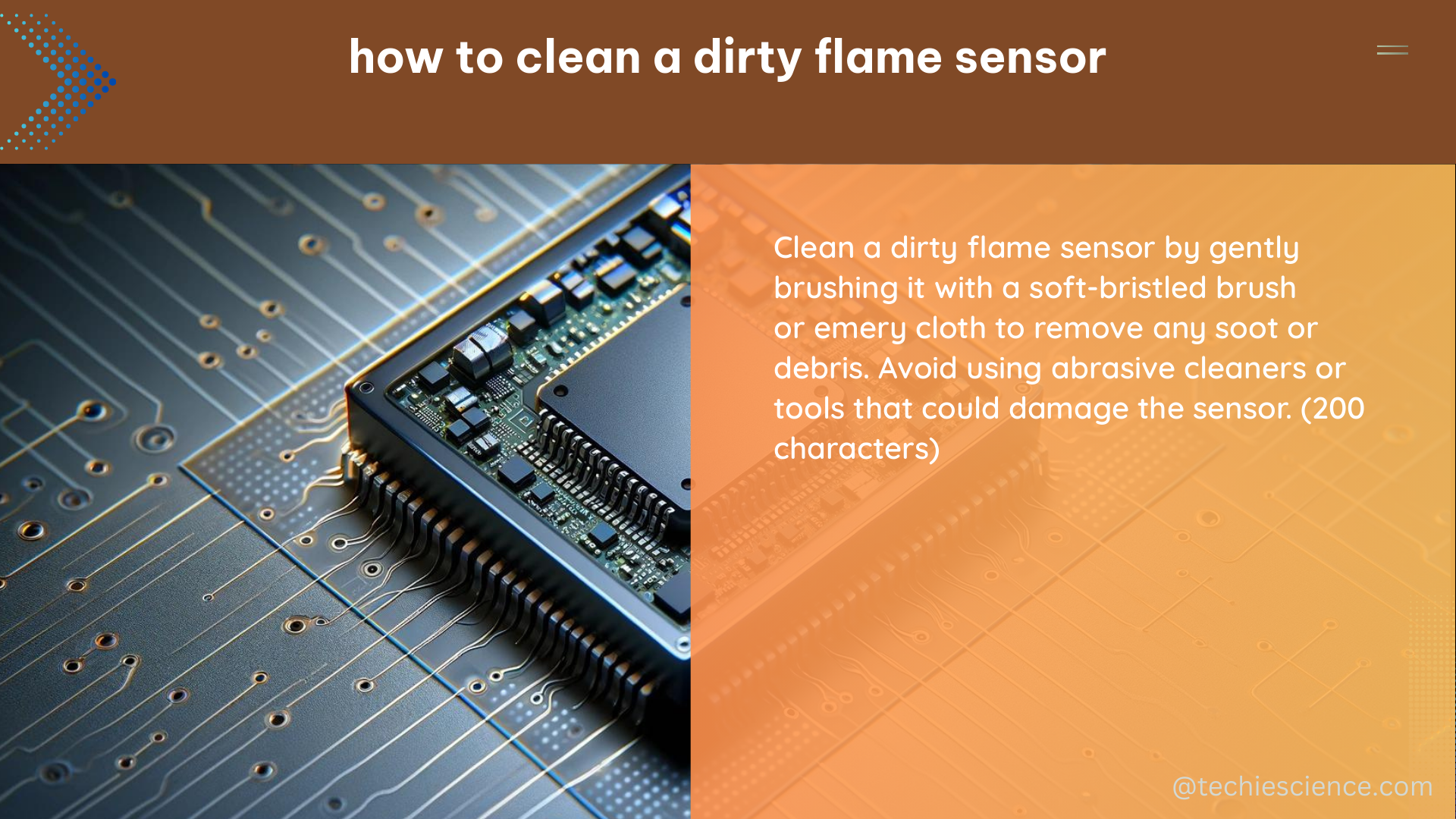A properly functioning flame sensor is crucial for the safe and efficient operation of your furnace. When the flame sensor becomes dirty, it can cause the furnace to shut off unexpectedly, leading to a frustrating and potentially dangerous situation. In this comprehensive guide, we’ll walk you through the step-by-step process of cleaning a dirty flame sensor, providing you with the technical details and quantifiable data to ensure a successful DIY repair.
Preparing to Clean the Flame Sensor
-
Turn Off the Furnace: Begin by turning off the furnace’s power supply. This can be done by switching the toggle switch to the off position or by shutting off the circuit breaker in your home’s electrical panel. For gas-powered furnaces, manually shut off the gas supply as well.
-
Locate the Flame Sensor: Identify the location of the flame sensor, which is typically situated near the burner assembly. The flame sensor is responsible for detecting the presence of a flame and signaling the furnace’s control board to continue operation.
-
Remove the Flame Sensor: Carefully remove the access panel or cover to expose the flame sensor. Use a ¼-inch hex head screwdriver to unscrew the sensor and slide it out, taking care to disconnect any cables or wires attached to it.
Cleaning the Flame Sensor

-
Inspect the Flame Sensor: Visually inspect the flame sensor for any signs of carbon buildup, corrosion, or physical damage. The sensor should have a clean, shiny appearance.
-
Clean with Sandpaper or Steel Wool: Gently rub the flame sensor rod with fine-grit sandpaper (400-600 grit) or steel wool to remove any carbon deposits or discoloration. Be careful not to apply too much pressure, as this can damage the sensor’s surface.
-
Measure the Flame Signal: Using a multimeter capable of measuring microamps (μA), check the flame signal of the cleaned sensor. The ideal flame signal should be between 5-25 μA. If the reading is below 5 μA, the sensor may need further cleaning or replacement.
-
Polish with a Scotchbrite Pad: For a more thorough cleaning, use a 3M Scotchbrite pad to polish the flame sensor. Gently rub the pad over the sensor, ensuring it is cool to the touch. This will help remove any remaining deposits and restore the sensor’s surface.
-
Check for Corrosion: Inspect the power wire connected to the flame sensor for any signs of corrosion. If corrosion is present, use a wire brush or sandpaper to clean the connection and ensure a secure, conductive path.
-
Wipe Away Dust: After cleaning, use a clean, dry paper towel to wipe away any remaining dust or debris from the flame sensor.
Reinstalling the Flame Sensor
-
Reconnect the Flame Sensor: Carefully slide the flame sensor back into its original position and secure it with the ¼-inch hex head screw.
-
Reconnect Cables: If you disconnected any cables or wires during the removal process, reconnect them now, ensuring a secure connection.
-
Restore Power and Gas: Turn the power supply back on and, for gas-powered furnaces, restore the gas supply.
-
Test the Furnace: Start the furnace and observe its operation. The flame should ignite and remain stable. If the furnace still experiences issues, the flame sensor may need further cleaning or replacement.
Preventive Maintenance
To maintain the cleanliness of your furnace’s flame sensor and prolong its lifespan, consider the following preventive measures:
- Regularly inspect the flame sensor during annual furnace maintenance checks.
- Clean the flame sensor every 1-2 years, or as needed, to prevent excessive carbon buildup.
- Avoid using abrasive cleaning tools, such as coarse sandpaper or wire brushes, which can damage the sensor’s surface.
- Consider replacing the flame sensor if it is severely corroded or damaged, as this can compromise its ability to detect the flame accurately.
By following this comprehensive guide, you can effectively clean a dirty flame sensor and restore your furnace’s proper operation. Remember to always prioritize safety and consult a professional if you are unsure about any aspect of the process.
References:
- How to Clean a Dirty Furnace Flame Sensor
- How to Clean a Flame Sensor on Furnace
- Measuring Flame Signal & Cleaning Flame Sensors

The lambdageeks.com Core SME Team is a group of experienced subject matter experts from diverse scientific and technical fields including Physics, Chemistry, Technology,Electronics & Electrical Engineering, Automotive, Mechanical Engineering. Our team collaborates to create high-quality, well-researched articles on a wide range of science and technology topics for the lambdageeks.com website.
All Our Senior SME are having more than 7 Years of experience in the respective fields . They are either Working Industry Professionals or assocaited With different Universities. Refer Our Authors Page to get to know About our Core SMEs.